#Writingtechniques
Explore tagged Tumblr posts
Text
"Breathing Life Into Your Characters: The Ultimate Guide to Applying Acting Techniques for Authentic Character Development"
Hey, everyone. Today we will look at a somewhat unique approach to character development for novels. Instead of simply jotting down character notes, we will work on becoming them, even if only for a moment.
1. Improvise in Character: Have you ever taken a drama class or entered an improv session? If not, that's okay. Sketch a scenario, stand up, and react as your character would. Try anything from ordering coffee to confronting a dragon. This may take some practice but notice how you act in your character's shoes. Jot down the facial expressions you used, gestures you made, and things you said.
2. Dress Rehearsal: Try dressing like your character, moving like them, and using their tone when speaking. Physically emulate your character as much as possible and take notes about their inner world.
3. Monologue Madness: Write a monologue about a critical moment in your character's life. Dig into how they feel about it, then act it out as they would. If it doesn't sound right try, try again. Try to capture their essence and why the moment is so crucial.
You're breathing life into your characters by incorporating acting exercises into your writing routine. Keep writing, keep performing, and keep creating. It may feel weird initially, but walking a mile in your character's shoes can help you understand them, yourself, and the writing process. Until the next time!
Everly
P.S. If you want more writing advice check out my other articles.
#writing#creativewriting#writingtips#writersontumblr#writingcommunity#CharacterDevelopmentMasterclass#ActingMeetsWriting#LivingYourCharactersLife#WritingTechniques#BecomingYourCharacter#WritingLikeAnActor#CreativeWritingTips#AuthenticCharacterCreation#ActorsStudioForWriters#InTheirShoesWriting#BreathingLifeIntoCharacters#UnleashYourInnerThespian#EmbodyYourCharacters#CharacterCreationMagic#TheWritePerformance#ScriptToStageWriting#BehindTheScenesWriting#DramaInked#TheActingWriter#MethodWritingMagic
107 notes
·
View notes
Text
Building a Fictional World for Your Story
In any story, the setting plays a crucial role, creating the stage on which your characters perform. In fiction, and particularly in genres such as fantasy and science fiction, the creation of a compelling, immersive world is paramount. But, how do you go about building a fictional world that feels real to your readers? Starting Points for World Building Before you start building your world,…
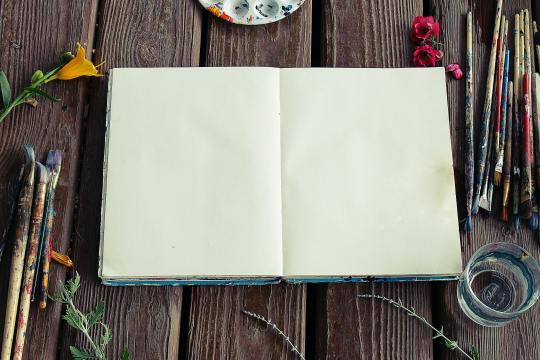
View On WordPress
#CreativeWriting#FantasyWriting#FictionWriting#NovelWriting#SciFiWriting#SettingDevelopment#storytelling#WorldBuilding#WritingTechniques#writingtips
2 notes
·
View notes
Text
Writing Fiction - Showing Vs. Telling

I've been reading and reviewing a lot of books lately. I'd say that roughly half of them have been well-written and engaging. The other half, well, the authors were in need of a good editor. Not that the ideas were bad. No, the problem I'm seeing most often is that the authors are telling me what's going on rather than showing me. All writers have their own styles and methods. There's nothing wrong with that. But, at least for me, I like to let my imagination participate when I'm reading. I want to see the characters moving on the page, I want to see their body language, hear their tone of voice, watch their facial expressions. For me, reading is akin to watching a show on television, or a movie, in that it plays out in my head as I read. What I don't like is when a writer tells me what's going on. Bob was angry. I mean, that's all well and good, but what does that really mean? Everyone shows anger differently. Some people lash out. Others get withdrawn and quiet. Some turn red in the face. Others shake and tremble.

Showing, on the other hand, looks something like this: Bob's face turned red and his eyes bulged in their sockets. This gives a vivid visual. I don't have to tell you Bob is angry. I'm showing you. Yes, it uses more words than simply saying he's mad, but those words paint a picture and provide something for your imagination to work with. I also find it more poetic. The description is like a brush stroke on a canvas. A splash of red gives you the meaning. I see this more with independently-published fiction. My assumption is that it's due to a lack of editing. A publishing house will assign an editor to read and review a manuscript and send it back to the author with requested revisions. Indie-published books are generally one person doing it all. And I know, I've self-published my own work and yes, it's a lot to deal with. What I try to keep in mind when I'm writing fiction is to show as much as I can. Describe everything. It's better to throw everything on the page and clean it up later. It's easier to cut words later than to try and add them in while editing. For what it's worth, I'm not complaining or pointing fingers at specific writers. I think this is advice that all fiction writers need to keep on their radar. If you want to keep your readers engaged, paint them a picture, show as much as you can, and give their imaginations the opportunity to participate. RB Read the full article
#Authors#Books#CreativeWriting#Fiction#NovelWriting#ShortStories#ShowDon\'tTell#Writer#Writing#WritingAdvice#WritingFiction#WritingTechniques
0 notes
Text
"Illusions Unveiled: In-Depth Analysis of B-Real's Raw Expression"
Let's dive deep into rap's artistry! Explore popular tracks, dissect verses, and unravel writing techniques. Share your song suggestions and insights! #RapAnalysis
Analyzing B-Real’s “Illusions”(https://genius.com/Cypress-hill-illusions-lyrics): Verse 1:B-Real’s opening salvo in “Illusions” is a declaration of defiance against the societal criticisms that assail him. He doesn’t merely reject these criticisms; he stands resolute in his independence, determined to forge his path despite the cacophony of voices clamoring for conformity. His frustration with…
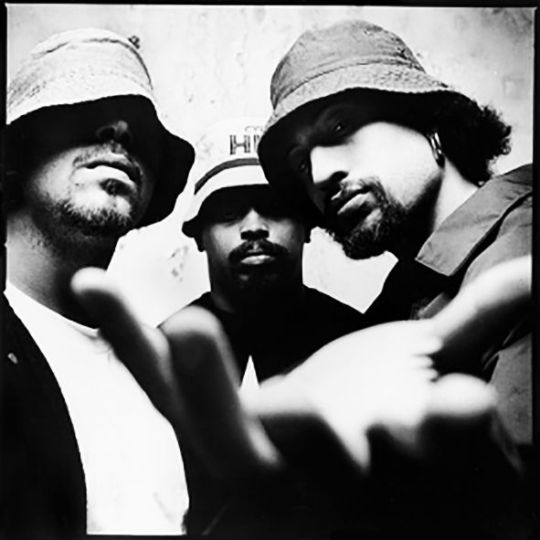
View On WordPress
0 notes
Text
Jade Malay Talks Techniques for Balancing Descriptive and Action-Packed Writing
In the realm of literature, finding the perfect equilibrium between showing and telling is akin to mastering a delicate dance. In this podcast, Jade Malay delves deep into the techniques essential for achieving a harmonious balance between descriptive prose and action-packed narration. Whether you're a novice writer seeking to refine your craft or a seasoned wordsmith looking to polish your skills, this exploration promises invaluable insights to elevate your storytelling prowess.
1 note
·
View note
Text
Exploring Creative Non-Fiction: Merging Facts with Imagination
Creative non-fiction stands at the crossroads between storytelling and truth, blending factual accuracy with the artistry of fiction. It’s a genre that allows writers to craft compelling narratives while staying rooted in reality. Embracing Authenticity 1. Truth as the Backbone Creative non-fiction harnesses real-life events, people, and places, maintaining fidelity to the truth while infusing…

View On WordPress
#CreativeNonFiction#CreativeWritingTips#EthicalWriting#FactualStorytelling#NarrativeCraft#NonFictionNarratives#ResearchInWriting#StorytellingBalance#WritingTechniques
0 notes
Text
How Can I Improve My Writing Craft?

How Can I Improve My Writing Craft?
Table of Contents Introduction Understanding the Craft: A Foundation 2.1 Defining Writing Craft 2.2 Recognizing the Importance Continuous Learning: A Writer's Best Tool 3.1 Reading Widely and Actively 3.2 Analyzing Diverse Writing Styles The Power of Practice: Sharpening Your Skills 4.1 Daily Writing Exercises 4.2 Setting Realistic Writing Goals Seeking Feedback: A Writer's Growth Catalyst 5.1 Embracing Constructive Criticism 5.2 Building a Trusted Writing Community Grammar and Style: Refining the Basics 6.1 Polishing Grammar Skills 6.2 Developing a Unique Writing Style Exploring Different Genres: A Writing Adventure 7.1 Venturing Beyond Comfort Zones 7.2 Adapting Techniques for Varied Genres Embracing Technology: Writing in the Digital Age 8.1 Utilizing Writing Apps and Tools 8.2 Balancing Technology with Traditional Methods Time Management: Carving Out Writing Moments 9.1 Creating a Writing Schedule 9.2 Maximizing Productivity in Short Bursts Mindfulness in Writing: Cultivating Creativity 10.1 The Role of Mindfulness Practices 10.2 Nurturing a Creative Mindset Networking and Collaboration: Writing Beyond Solitude 11.1 Connecting with Fellow Writers 11.2 Collaborative Writing Projects Editing and Revising: The Art of Refinement 12.1 The Importance of Multiple Drafts 12.2 Effective Self-Editing Techniques SEO Integration: Balancing Creativity with Visibility 13.1 Incorporating Keywords Naturally 13.2 Writing Engaging Meta Descriptions Measuring Progress: Tracking Writing Success 14.1 Setting Milestones 14.2 Utilizing Analytics Tools Conclusion FAQs About Improving Writing Craft Introduction Embarking on the journey of improving your writing craft is an exciting endeavor filled with opportunities for growth and creativity. Whether you're a novice or a seasoned writer, the path to honing your craft involves a combination of continuous learning, practice, feedback, and a touch of technology. Let's explore how you can enhance your writing skills and elevate your craft to new heights. Understanding the Craft: A Foundation Defining Writing Craft At its core, writing craft encompasses the skills and techniques that transform words into compelling narratives. It involves mastering the art of storytelling, refining language use, and creating a unique voice that resonates with readers. Recognizing the Importance Understanding the importance of writing craft is the first step towards improvement. A well-crafted piece not only captures attention but also leaves a lasting impact. It's the difference between ordinary writing and a literary work of art. Continuous Learning: A Writer's Best Tool Reading Widely and Actively One of the most effective ways to enhance your writing craft is by reading extensively. Immerse yourself in a variety of genres, paying attention to different writing styles. Actively engage with the material, dissecting what works and why. Analyzing Diverse Writing Styles Explore authors with diverse writing styles. Analyze how they craft sentences, develop characters, and build tension. Extract elements that resonate with you and consider how you can incorporate them into your own writing. The Power of Practice: Sharpening Your Skills Daily Writing Exercises Crafting your writing skills is a muscle that requires regular exercise. Dedicate time to daily writing exercises. These can be prompts, free writing sessions, or focused challenges that push your creative boundaries. Setting Realistic Writing Goals Set achievable writing goals to foster a sense of accomplishment. Whether it's a word count, completing a chapter, or experimenting with a new writing style, realistic goals keep you motivated and consistently improving. Seeking Feedback: A Writer's Growth Catalyst Embracing Constructive Criticism Constructive criticism is a valuable tool for improvement. Seek feedback from peers, writing groups, or mentors. Embrace constructive criticism as a means to identify areas for growth and refine your craft. Building a Trusted Writing Community Surround yourself with a supportive writing community. Share your work, engage in discussions, and learn from others. A community provides encouragement, diverse perspectives, and a network for constructive feedback. Grammar and Style: Refining the Basics Polishing Grammar Skills Strong grammar forms the backbone of effective writing. Regularly revisit grammar rules, punctuation, and sentence structure. Tools like Grammarly can assist in identifying and correcting common errors. Developing a Unique Writing Style Your writing style is your literary fingerprint. Develop a style that reflects your personality and resonates with readers. Experiment with tone, rhythm, and figurative language to create a distinctive voice. Exploring Different Genres: A Writing Adventure Venturing Beyond Comfort Zones Challenge yourself by exploring different genres. Whether it's fiction, non-fiction, poetry, or creative essays, each genre offers unique challenges that contribute to your overall writing versatility. Adapting Techniques for Varied Genres Recognize that each genre has its own set of conventions. Adapt your craft techniques to suit the requirements of the genre you're exploring. This adaptability enhances your ability to connect with diverse audiences. Embracing Technology: Writing in the Digital Age Utilizing Writing Apps and Tools In the digital age, leverage writing apps and tools to streamline your process. Scrivener, Evernote, and Google Docs are examples of tools that enhance organization, collaboration, and efficiency in your writing. Balancing Technology with Traditional Methods While technology is a boon, balance it with traditional methods. Nothing beats the tactile experience of jotting down ideas in a notebook or immersing yourself in a printed book. A hybrid approach keeps your writing experience well-rounded. Time Management: Carving Out Writing Moments Creating a Writing Schedule Effective time management is crucial for writing improvement. Establish a writing schedule that aligns with your peak creative hours. Consistency is key to steady progress. Maximizing Productivity in Short Bursts Not every writing session needs to be lengthy. Maximize productivity by utilizing short bursts of focused writing. Quality often surpasses quantity in the world of writing. Mindfulness in Writing: Cultivating Creativity The Role of Mindfulness Practices Incorporate mindfulness practices into your writing routine. Techniques like meditation or mindful writing exercises can enhance focus, spark creativity, and alleviate writing blocks. Nurturing a Creative Mindset Cultivate a creative mindset by embracing curiosity. Allow your mind to wander, explore unconventional ideas, and find inspiration in the world around you. A curious mind fuels creative expression. Networking and Collaboration: Writing Beyond Solitude Connecting with Fellow Writers Networking with fellow writers opens doors to opportunities for collaboration, feedback, and shared experiences. Attend writing events, join online forums, and participate in writing communities to expand your network. Collaborative Writing Projects Engage in collaborative writing projects to stretch your creative boundaries. Collaborations provide exposure to different perspectives and writing styles, fostering growth in your craft. Editing and Revising: The Art of Refinement The Importance of Multiple Drafts Writing is rewriting. Embrace the iterative process of multiple drafts. Each revision refines your work, allowing you to uncover hidden gems and polish rough edges. Effective Self-Editing Techniques Develop effective self-editing skills. Distance yourself from your work before revisiting it. Focus on clarity, coherence, and the overall impact of your writing. Tools like ProWritingAid can aid in systematic self-editing. SEO Integration: Balancing Creativity with Visibility Incorporating Keywords Naturally For writers in the digital landscape, SEO is a consideration. Integrate keywords naturally into your content, ensuring a seamless blend with your writing. Tools like Yoast SEO can guide you in optimizing your content. Writing Engaging Meta Descriptions Craft meta descriptions that not only enhance SEO but also entice readers. A well-crafted meta description serves as a compelling preview, inviting readers to delve into your content. Measuring Progress: Tracking Writing Success Setting Milestones Establish writing milestones to track your progress. Whether it's completing a manuscript, reaching a specific word count, or getting published, milestones provide a tangible sense of achievement. Utilizing Analytics Tools In the digital era, analytics tools offer insights into reader behavior. Use tools like Google Analytics to understand audience engagement, popular content, and areas for improvement. Conclusion Improving your writing craft is a dynamic journey that requires a blend of passion, dedication, and adaptability. Embrace the continuous learning process, experiment with different techniques, and find joy in the evolution of your craft. Remember, the journey itself is as valuable as the destination. FAQs About Improving Writing Craft Can anyone become a skilled writer with practice, or is it an innate talent? Writing, like any skill, can be honed with practice. While some may have a natural inclination, consistent effort and dedication can transform anyone into a skilled writer. How can I overcome writer's block when trying to improve my writing craft? Writer's block is common. Try changing your writing environment, taking short breaks, or engaging in writing prompts to spark creativity. Experiment with different techniques to find what works best for you. Is it necessary to invest in writing courses to improve my craft, or can self-learning be equally effective? Both options are valid. Writing courses offer structured learning, but self-learning through reading, practice, and seeking feedback can be equally effective. Choose the approach that aligns with your learning style and goals. What role does patience play in improving writing craft, and how long does it take to see significant improvement? Patience is crucial in the writing journey. Improvement is gradual, and the timeline varies for each writer. Consistent effort over time, coupled with a willingness to learn and adapt, yields significant progress. How can I balance the need for SEO optimization with maintaining the creativity and authenticity of my writing? Balancing SEO and creativity involves integrating keywords naturally, writing engaging meta descriptions, and prioritizing reader experience. Aim for a harmonious blend where SEO enhances visibility without compromising the authenticity of your writing. Read the full article
#Characterdevelopment#ContinuousLearning#Creativewriting#Dialogue#Plotdevelopment#Pointofview#Revisionandediting#Storytelling#TechnologyinWriting#TimeManagementandProductivity#Writingcraft#WritingCraftImprovement#Writingtechniques#Writingtips
0 notes
Text
Revolutionary Techniques to Write Content in a Second: Get ready to transform the way you write content forever. In this video, we'll uncover groundbreaking techniques that can help you write engaging and compelling content within seconds. Discover how to maximize your productivity and deliver high-quality content without spending hours at your desk. We'll delve into secret tips, tricks, and tools used by professional writers to fast-track their content creation process. Whether you're a content writer, blogger, or marketer, these techniques will empower you to write better and faster. Tune in to change the way you approach content writing, and start writing in seconds today! Check out here ⬇️ ⬇️ ⬇️ ⠀ https://promptigo.com/
#WriteFast#ContentCreation#FastWriting#ContentStrategy#WritingTechniques#SpeedWriting#ContentInSecond#RapidContent#EfficientWriting#QuickContent#promptigo
0 notes
Text
"As an ADHD Writer..." The Series
This last fall, I passed the three year mark for being officially diagnosed with Attention Deficit Hyperactive Disorder (ADHD). When I was first diagnosed I went on the search for resources, both academic and anecdotal, to advise me on how to live my life. Most especially, on how to be a writer who wants to not only write, but actually finish my writing projects. Only to discover, very few…
0 notes
Video
youtube
Parallelism in Writing l Grade 5 and above l Lesson 3 #writing #parallelism
#youtube#Parallelism in Writing l Grade 5 and above l Lesson 3 writing writingskills writingtechniques 🚀 Welcome to the amazing world of writing
1 note
·
View note
Text
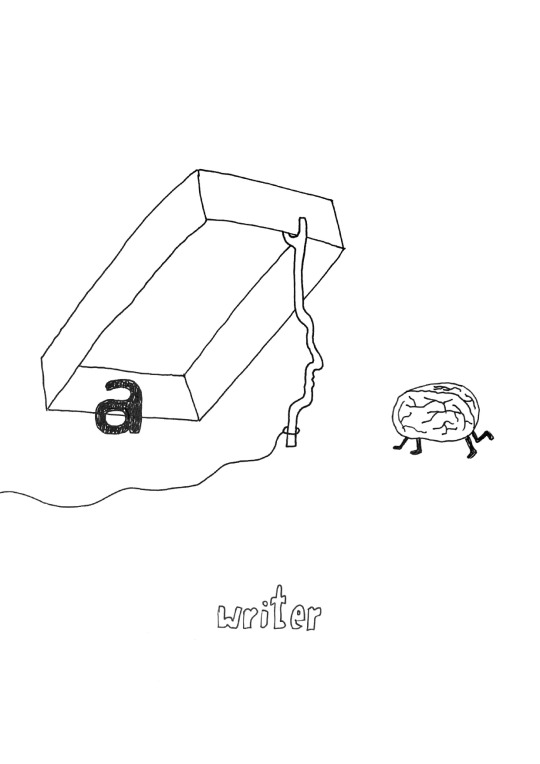
0 notes
Text
Exploring Different Story Genres: Thriller
Thrillers: the page-turners that keep us awake at night, the stories that push us to the edge of our seats, the tales that make our hearts race. But what constitutes a thriller, and how do we master the art of writing one? Understanding the Thriller Genre At the heart of every thriller lies suspense. Thrillers are crafted to evoke excitement, anticipation, and apprehension in the reader,…

View On WordPress
#CreativeWriting#FictionWriting#NovelWriting#StoryGenres#storytelling#Suspense#ThrillerSubgenres#ThrillerWriting#WritingTechniques#writingtips
0 notes
Text
Calligraphy Guideline Basics: Line Perfection Starts Here
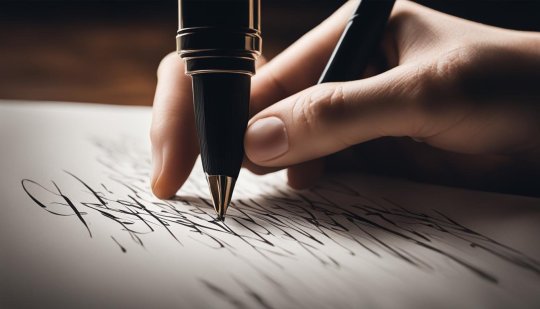
Calligraphy Guideline Basics: Master Line Perfection Instantly
Welcome to our comprehensive guide on calligraphy guideline basics. In this section, we will explore the fundamental concepts you need to know to achieve line perfection in calligraphy. Understanding calligraphy guidelines is essential for creating beautiful letterforms and developing your skills as a calligraphy artist. Before we dive into the details, let's take a moment to appreciate the artistry of calligraphy. Calligraphy is a timeless form of writing that combines artistic expression with precise lettering. It has been practiced for centuries and is celebrated for its elegance and beauty. Now, let's get started with the basics. Calligraphy guidelines provide the structure and framework for your letterforms. They act as a guide to help you maintain consistent letter heights, spacing, and proportions. By following these guidelines, you can achieve the desired line perfection that is characteristic of beautiful calligraphy. Throughout this guide, we will cover everything from understanding basic calligraphy strokes and practicing like a pro to choosing the right tools and overcoming common challenges. Whether you're a beginner or looking to enhance your existing skills, this guide will provide you with the knowledge and resources to succeed in the art of calligraphy. Key Takeaways: - Calligraphy guidelines are essential for achieving line perfection. - Understanding basic calligraphy strokes is crucial for creating cohesive letterforms. - Practicing calligraphy with the right tools and techniques is the key to improving your skills. - Differentiating between modern calligraphy and hand lettering allows for personal expression. - Overcoming common calligraphy challenges requires consistency and creativity.
Understanding Basic Calligraphy Strokes
Mastering basic calligraphy strokes is essential for beginners to develop their skills and create beautiful letterforms. These strokes serve as the building blocks for lowercase letters in calligraphy and form the foundation of the art. By understanding and practicing these strokes, you can achieve consistency and precision in your work. There are four main basic calligraphy strokes that you need to familiarize yourself with: - Downstroke: This is a vertical stroke that is thick and bold. It is created by applying pressure when moving the pen downwards. - Upstroke: This is a thin and light stroke that is created by moving the pen upwards without applying pressure. - Underturn: This stroke is curved and transitions smoothly from a thin to a thick line. It is commonly used in letters like "a", "d", and "g". - Overturn: This stroke is also curved but transitions from a thick to a thin line. It is commonly used in letters like "b", "p", and "o". By practicing these strokes individually and combining them in different ways, you can create a wide variety of letterforms and develop your own unique calligraphy style. Remember to start with light pressure and gradually increase it to achieve the desired thickness in your downstrokes. Consistency and practice are key to mastering basic calligraphy strokes and improving your overall technique. Stroke Type Examples Downstroke h, k, t Upstroke i, j, l Underturn a, d, g Overturn b, p, o Practice these basic calligraphy strokes regularly, focusing on achieving consistency and control. Experiment with different pressures and angles to create unique variations in your letterforms. By mastering these strokes, you will build a strong foundation for further exploration and experimentation in the world of calligraphy.
Practicing Calligraphy Like a Pro
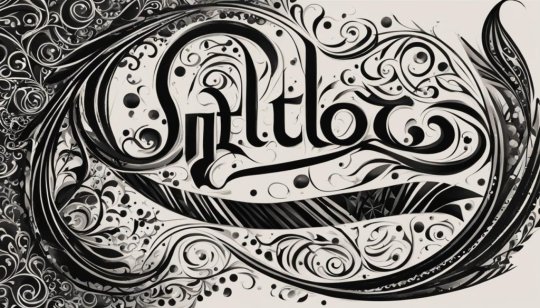
Are you ready to dive into the world of calligraphy? Starting a new artistic journey can be both exciting and intimidating, but with the right tips and techniques, you can practice calligraphy like a pro. In this section, we will guide you through the steps to get started and provide valuable insights to improve your calligraphy skills. Understanding the Difference: Calligraphy vs. Cursive Writing Before we delve into the techniques, let's clarify the difference between calligraphy and cursive writing. While cursive writing aims for speed and legibility, calligraphy is an art form that focuses on creating beautiful and expressive letterforms. In calligraphy, each stroke is intentional and deliberate, making it crucial to practice each stroke individually to achieve precision and consistency. To start your calligraphy journey, you will need some essential tools and materials. The most common tools include calligraphy pens, brush pens, ink, and paper. It's important to choose high-quality materials that suit your personal preferences and style. Additionally, practicing on calligraphy-specific paper or using practice sheets can help you develop better control and muscle memory. Practicing the Basic Strokes Now that you have your tools ready, it's time to practice the basic strokes. These strokes form the foundation for creating various letterforms. Start by mastering essential strokes such as the upward stroke, downward stroke, and curve. Practice each stroke individually, focusing on consistency and line weight. As you become more comfortable, you can move on to combining the strokes to create different letters. Remember, practice is key to improving your calligraphy skills. Dedicate regular time to practice and experiment with different styles and techniques. By following these tips and putting in the effort, you'll be well on your way to becoming a calligraphy pro!
Choosing the Right Calligraphy Tools
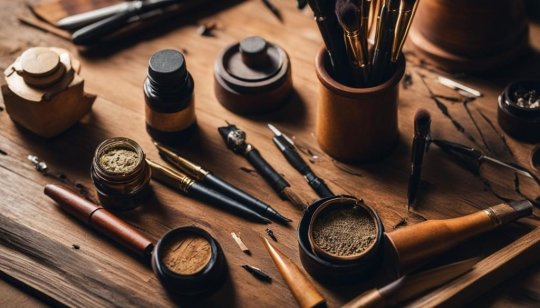
When it comes to calligraphy, selecting the right tools is crucial for achieving the desired results. Whether you're a beginner or an experienced calligrapher, having the right calligraphy pens and brush pens can make all the difference in your writing. Here, we will guide you on how to choose the perfect tools for your calligraphy journey. Calligraphy Pens Calligraphy pens come in various types, each offering unique features and effects. The two most common types are dip pens and fountain pens. Dip pens require a separate nib, which is dipped into ink, allowing for more control and customization in your strokes. Fountain pens, on the other hand, have an internal reservoir that holds the ink, providing a smoother writing experience. When choosing a calligraphy pen, consider factors like nib size, material, and flexibility to find the one that suits your style and comfort. Brush Pens Brush pens are a versatile tool for calligraphy, especially for creating bold and expressive lettering. They consist of a brush-like tip that mimics the effects of a traditional brush and ink. Brush pens are available in different sizes and stiffness levels, allowing for variation in stroke widths. They are perfect for both beginners and experienced calligraphers looking to add flair and dynamism to their writing. Experiment with different brush pens to find the one that best suits your desired style and level of control. Calligraphy Practice Sheets Practice sheets are essential for honing your calligraphy skills and improving your technique. These sheets provide guidelines for practicing different strokes, letterforms, and letter combinations. They help develop muscle memory and consistency in your writing. Additionally, practice sheets often include exercises to improve letter spacing, slant, and overall composition. Look for practice sheets that cater to your preferred calligraphy style, whether it's traditional, modern, or a specific script. Regular practice using these sheets will significantly enhance your calligraphy skills over time. Remember, choosing the right calligraphy tools is a personal preference, so don't be afraid to explore different options and experiment with various pens and brush pens. Additionally, dedicated practice using practice sheets will help you develop muscle memory and improve your overall calligraphy technique. With the right tools and regular practice, you'll be well on your way to creating beautiful, artistic lettering.
The Difference between Modern Calligraphy and Hand Lettering
If you're new to the world of calligraphy, you may have come across two terms that are often used interchangeably: modern calligraphy and hand lettering. While they share similarities, there are distinct differences between the two styles. Modern calligraphy is a contemporary take on traditional calligraphy. It embraces the foundational principles of calligraphy but allows for more freedom and personal expression. Modern calligraphy often incorporates elements of various lettering styles, creating a unique and artistic approach to letterforms. Hand lettering, on the other hand, refers to the art of drawing letters by hand. It encompasses a wide range of styles, including but not limited to calligraphy. Hand lettering allows for more flexibility in design and can incorporate embellishments, illustrations, and other graphic elements to enhance the overall composition. While modern calligraphy focuses on the beauty of letterforms and the rhythm of strokes, hand lettering expands beyond the realm of traditional writing and explores the integration of typography and illustration. Both styles offer endless possibilities for creativity and self-expression, making them popular choices among artists, designers, and those seeking to add a personal touch to their projects. Examples of Modern Calligraphy and Hand Lettering To further illustrate the distinction between modern calligraphy and hand lettering, here are some examples: "The art of modern calligraphy celebrates the elegance of letterforms through fluid and deliberate strokes. It combines the precision of traditional calligraphy with a contemporary twist." "Hand lettering is a form of artistic expression that allows for the creation of unique letterforms through illustrative elements and stylized typography. It invites experimentation and encourages the blending of different artistic mediums." Modern Calligraphy Hand Lettering Focuses on the beauty of letterforms Explores integration of typography and illustration Uses traditional calligraphy tools Allows for various artistic mediums Emphasizes precision and rhythm of strokes Encourages creativity and experimentation By understanding the difference between modern calligraphy and hand lettering, you can choose the style that best suits your creative vision and brings your ideas to life.
Overcoming Common Calligraphy Challenges
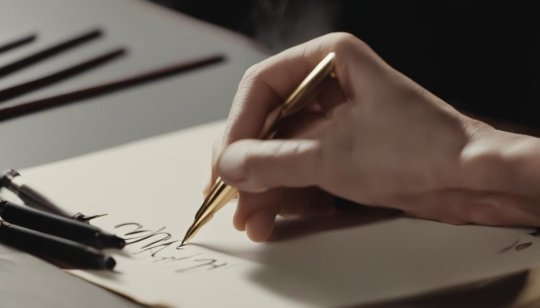
Improving your calligraphy skills can be both exciting and challenging. As you strive for consistency in your letterforms and aim to create beautiful pieces of art, you may encounter some common obstacles along the way. In this section, we will address these challenges and provide you with valuable tips and techniques to help you overcome them. Challenge 1: Achieving Consistency in Letterforms Consistency is key in calligraphy, and it can be a struggle to maintain uniformity in your strokes and letter shapes. To overcome this challenge, practice regularly and focus on mastering the basic calligraphy strokes. Pay attention to the angle and pressure of your pen or brush and strive for evenness in each stroke. Using guidelines or grids can also be helpful in achieving consistent letterforms. Challenge 2: Improving Overall Skill and Technique Calligraphy is a skill that requires constant improvement and refinement. To enhance your calligraphy technique, dedicate time to deliberate practice. Focus on specific aspects of your strokes and letterforms that need improvement and work on them systematically. Study the work of experienced calligraphers for inspiration and guidance, and don't be afraid to experiment with different styles and techniques to find your unique voice. Challenge 3: Finding Inspiration and Creativity in Calligraphy Calligraphy is not just about mastering the technical aspects; it's also about expressing your creativity and connecting with your artistic side. If you find yourself lacking inspiration, try exploring different calligraphy styles and experimenting with various tools and materials. Look for inspiration outside of calligraphy as well, such as nature, art, or literature. Remember that calligraphy is a journey, and finding your own creative path may take time and exploration. In conclusion, overcoming common calligraphy challenges is part of the learning process and an opportunity for growth. Embrace the journey, be patient with yourself, and continue to practice and improve. With dedication and perseverance, you will develop your calligraphy skills and create beautiful, expressive pieces of art.
History of Basic Calligraphy Strokes

In this section, we will explore the fascinating history and evolution of basic calligraphy strokes. Understanding the origins of these strokes will provide valuable insights into the art form and enhance your appreciation for the techniques used in calligraphy today. Calligraphy has a rich history that dates back centuries. It has been practiced in various forms and styles across different cultures, each contributing to the development and refinement of calligraphy strokes. From the elegant brushstrokes of Chinese calligraphy to the precise penmanship of Western calligraphy, the evolution of these strokes showcases the creativity and skill of calligraphers throughout history. Throughout the ages, calligraphy strokes have been influenced by cultural, social, and artistic movements. Different regions and time periods have contributed their unique styles and techniques, resulting in a diverse range of calligraphy strokes. Additionally, the terminology used to describe these strokes has evolved over time, reflecting the changing understanding and appreciation of calligraphy as an art form. The Evolution of Calligraphy Strokes To better understand the history of calligraphy strokes, it's important to examine the key milestones and influences that have shaped their evolution. Here are some notable examples: Time Period Region Influence Ancient China China The development of brush calligraphy and the use of distinct brushstrokes for different characters. Islamic Golden Age Middle East Arabic calligraphy, characterized by fluid and intricate strokes, became highly regarded for its aesthetic and religious significance. Medieval Europe Europe The Gothic script, with its elaborate and ornamental strokes, gained popularity in manuscripts and religious texts. Japanese Edo Period Japan Japanese calligraphy, known as shodo, adopted its distinctive strokes and techniques influenced by Chinese calligraphy. By exploring the history of calligraphy strokes and the cultural contexts in which they emerged, we can gain a deeper understanding of the art form and find inspiration in the techniques of calligraphers of the past. "Calligraphy strokes have a rich and varied history, with each stroke holding cultural significance and artistic expression. By studying the evolution of calligraphy strokes, we can engage with the traditions of ancient civilizations and appreciate the timeless beauty of this art form." - Calligraphy Master
Practicing Calligraphy with Pencil and Paper
https://www.youtube.com/watch?v=kRZ3-rtXpDQ If you're a beginner looking to explore the art of calligraphy, practicing with pencil and paper can be a great way to start. This method offers accessibility and affordability, allowing you to hone your skills without investing in specialized tools. In this section, we will guide you through the process of practicing calligraphy with pencil and paper, providing tips and techniques to help you get started. Basic Calligraphy Supplies Before we dive into the practice techniques, let's take a look at the basic calligraphy supplies you'll need: - A pencil with a smooth lead - preferably an HB or 2B pencil - A calligraphy guideline sheet or a ruler to create your own guidelines - A smooth and high-quality paper, such as Bristol board or calligraphy practice paper - An eraser to correct any mistakes or smudges The Right Pencil Grip The correct pencil grip is crucial for achieving control and precision in your calligraphy strokes. Here are some tips to help you establish a proper grip: - Hold the pencil lightly between your thumb, index, and middle fingers. - Angle the pencil at a comfortable slant, allowing for smooth movement. - Keep your wrist loose and relaxed to avoid tension. - Practice writing short strokes and gradually build up to longer strokes. By practicing calligraphy with pencil and paper, you can develop a solid foundation for your letterforms and gain a better understanding of stroke consistency and control. Remember to be patient with yourself and practice regularly to improve your skills. With dedication and practice, you'll soon be creating beautiful calligraphy pieces using a variety of tools.
Brush Pen Calligraphy for Beginners
If you're looking to dive into the world of calligraphy but prefer a more versatile and beginner-friendly tool, brush pens are an excellent choice. These pens combine the ease of use of a marker with the ability to create beautiful brush-like strokes. Whether you're a complete beginner or have some experience with calligraphy, brush pens offer endless possibilities for creativity. When it comes to brush pen calligraphy, choosing the right pen is crucial. There are various types of brush pens available, each with its own unique characteristics. Some pens have a flexible brush tip that allows you to create both thick and thin strokes effortlessly, while others have a firmer tip that provides more control. Experiment with different pens to find the one that suits your style and preferences. Once you have your brush pen, it's time to explore different techniques to create gorgeous letterforms. Brush pen calligraphy offers the opportunity to experiment with variations in pressure, angle, and speed to achieve different effects. Practice creating thick downstrokes and delicate upstrokes, and experiment with letter spacing to add your personal touch to your calligraphy. Remember, practice is key when it comes to brush pen calligraphy. Set aside regular time to practice various letterforms, words, and phrases. You can find printable practice sheets online or create your own. As you gain confidence and proficiency, you'll be able to explore more advanced techniques and develop your unique style in brush pen calligraphy.
The Art of Pressure Control in Calligraphy
In the world of calligraphy, mastering the art of pressure control is crucial for achieving beautiful and balanced letterforms. Understanding how to apply the right amount of pressure to your pen or brush is what creates those elegant thick and thin strokes that bring your calligraphy to life. Read the full article
0 notes
Photo

How To Help Your Child Master Writing: 7 Important Tips? Written language is not just about knowing how to write letters. It is a complex integrative process. Let's help your child learn this critical skill.
0 notes
Text
Outlining in Sections
#indigenouscreator experimenting with #writingtechniques for a #spaceoperabook about a #galacticinvasion #Iamwriting #booktok
#indigenouscreator experimenting with #writingtechniques for a #spaceoperabook about a #galacticinvasion #Iamwriting #booktok
View On WordPress
0 notes
Video
vimeo
Mastering Strategic Intentional Communication and Unlocking Leadership through Writing with Erin Lebacqz from THE EMBC NETWORK on Vimeo.
In this insightful video, international educator and author Erin Lebacqz shares her expertise on mastering strategic communication and unlocking leadership through writing. With over 25 years of teaching experience, she has collaborated with numerous business and non-profit organizations worldwide, helping individuals develop high-value writing skills. In today's fast-paced and interconnected world, effective communication is paramount for leaders. Lebacqz emphasizes the strategic utilization of writing as a powerful management tool. By writing with clarity, conciseness, and intention, leaders can boost their confidence and influence. Discover proven strategies to communicate strategically as a leader, leveraging the power of writing to convey messages effectively. From mastering strategic writing techniques to developing emotional intelligence in writing and leadership, this video provides invaluable insights for both new and experienced leaders. Furthermore, Lebacqz explores the significance of intentional communication in building successful teams. By fostering intentional communication within your organization, you can enhance collaboration, problem-solving, and ultimately, achieve greater success. Don't miss the opportunity to learn from Erin Lebacqz's expertise in this captivating video. Unlock your leadership potential by mastering strategic communication through writing. Subscribe to our channel now and join the community of aspiring leaders and skilled communicators on the quest for success. Visit our channel to explore more valuable content on leadership, communication, and personal development: youtube.com/channel/UCDdx6ZE7SgVCTG1t1KMDjeQ #communication #leadership #writing #strategiccommunication #masteringcommunication #unlockingleadership #effectivecommunication #communicationtips #writingtips #leadershiptips #communicationskills #leadershipdevelopment #businesscommunication #leadershipskills #professionalwriting #strategicwriting #communicationstrategies #leadershipcommunication #writingstrategies #communicationmastery #computerwriting #writingtips #writingtechniques #essentialskills #wordprocessing #typing #keyboardskills #masteryourwriting #computerskills #writinglessons #writingtutorial #creativewriting #writingprocess #writingpractice #typingtechniques #wordprocessingtips #writingtools #computerliteracy #writinghelp #digitalwriting
0 notes